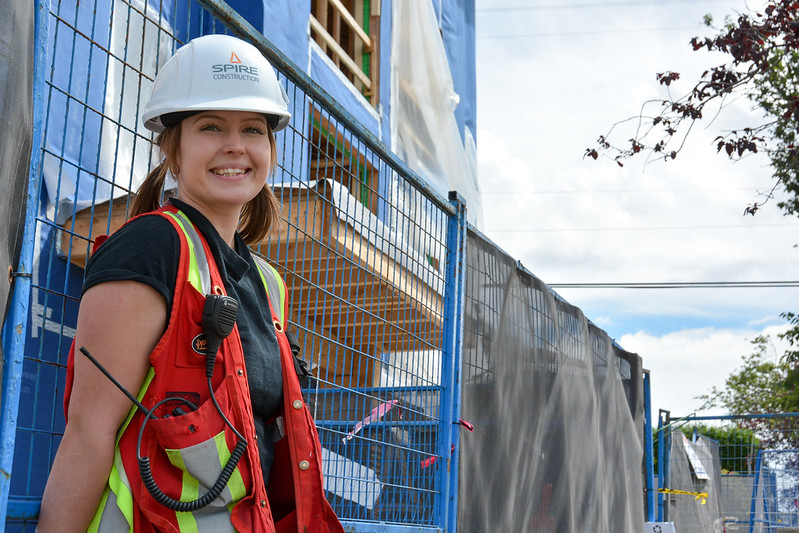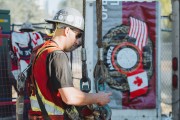The Canadian Sustainable Jobs Act (Bill C-50) is a critical piece of climate legislation that will give workers, communities and industry certainty about the clean energy future. But it’s just the start of the work Canada needs to do to create good, sustainable jobs for workers and to ensure Canada can grasp the opportunities presented by the global transition toward a clean energy economy.
Countries around the world are racing to secure their place in a net-zero future, while addressing the human and financial realities of climate change. Dependence on global markets and external demand for goods means that the energy and resource sector are subject to extreme volatility when shifts in the global market occur. For example, projected declines in global demand for oil beginning in 2030 will likely result in a more globally competitive oil market where the least costly, least carbon-intensive producers will remain most successful. Given that Canada produces some of the most expensive, emissions intensive oil when compared against leading world producers, we can expect changes to occur in the sector due to decreased demand if it does not adapt.
This legislation, along with Clean Electricity Regulations, the cap on emissions from the oil and gas sector, and a continuing strong carbon tax structure, will give industry the certainty it needs to commit to decarbonization, and send a signal that from here forward, workers will be provided a seat at the table.
Once the Bill is passed, the real work will begin. It will be time to invest in workers so they can take full advantage of the opportunities the clean energy economy will present. That means putting supports in place to grow decent jobs in new and transitioning sectors. Canada needs to ensure that workers and communities have the resources and supports they need to take advantage of these new opportunities.
Over 82 per cent of Albertans say the provincial government should take an active role in planning for future job opportunities for energy workers.
 We have been working with the Canadian Labour Congress on the second installment of our Sustainable Jobs Blueprint series. It highlights the actions, investments, and leadership that the Government of Canada needs to demonstrate to support workers and stay competitive with the U.S. and Europe. It also finds these actions span several policy areas and jurisdictions, and that provinces and territories have a significant role to play.
We have been working with the Canadian Labour Congress on the second installment of our Sustainable Jobs Blueprint series. It highlights the actions, investments, and leadership that the Government of Canada needs to demonstrate to support workers and stay competitive with the U.S. and Europe. It also finds these actions span several policy areas and jurisdictions, and that provinces and territories have a significant role to play.
Recognizing that labour needs to be at the centre of our climate plans, we’ve consulted with workers in sectors that may be impacted by the energy transition, as well as union representatives and other experts. We captured their concerns and needs for the energy transition. We also conducted a modelling exercise to test the potential impacts that different government interventions would have on the labour force and economy in a clean energy future.
 With this modeling and research, coupled with stakeholder input, we have created a blueprint for how the Government of Canada can empower workers while ensuring the net-zero economy has the skilled labour it needs to thrive and compete in a rapidly changing world.
With this modeling and research, coupled with stakeholder input, we have created a blueprint for how the Government of Canada can empower workers while ensuring the net-zero economy has the skilled labour it needs to thrive and compete in a rapidly changing world.
While the first report outlined the steps necessary to develop a robust governance structure that brings industry, workers and communities together to steer policy and planning decisions and create a thriving energy workforce in the near and long term, this second report highlights the actions and investments that must follow when the Bill becomes law.
Our modeling suggests the clean energy economy has the potential to create significant opportunities for Canadians if governments invest in supporting workers through the transition. There could be as many as two million direct and indirect clean economy jobs in 2050. Training and financial supports will lower unemployment and increase wages in the most affected sections of the economy. And if policies like enhanced EI, training subsidies and investments in affected regions are put into place, Canada’s GDP could increase by $7 billion in 2050 compared to scenarios where these interventions are not implemented.
We also know that workers in exposed industries are more likely to support the path to net-zero if they are confident that there is a plan in place to support them. Our interviews with workers showed clear support for labour and economic policies designed to help them through transition. They want to see their incomes and pensions protected, to stay in their communities, and to have their unions at the table with decisionmakers when determining their futures.
All of this is possible but only if government invests ambitiously in that future.
To learn more, read the first and second reports in our Sustainable Jobs Blueprint series.





